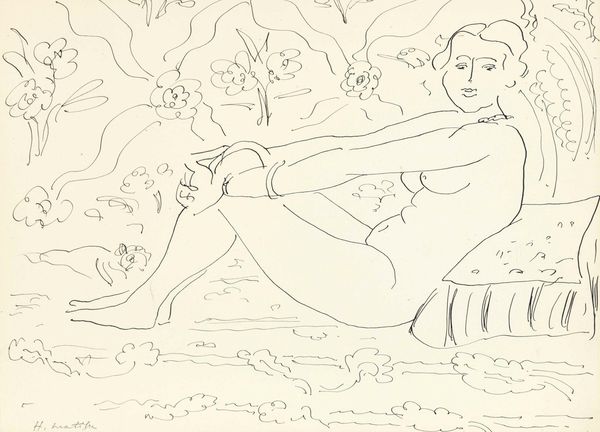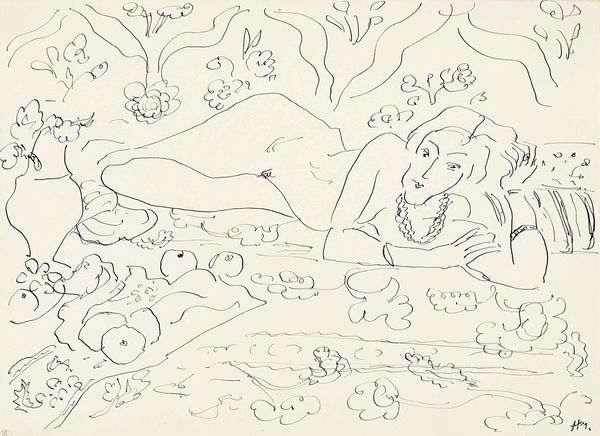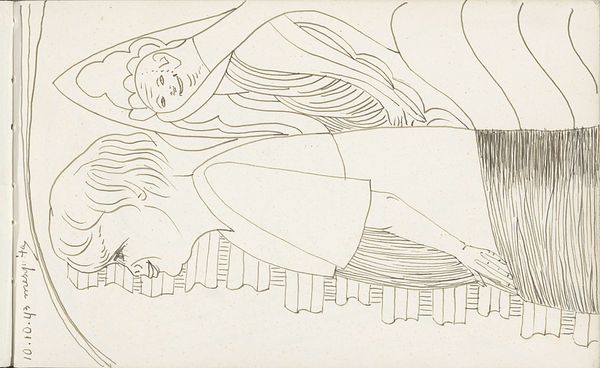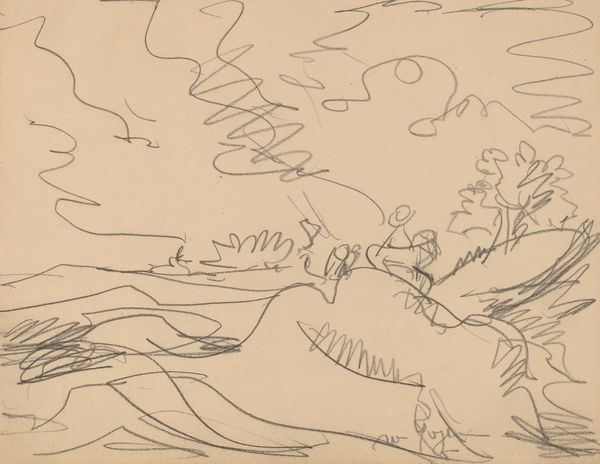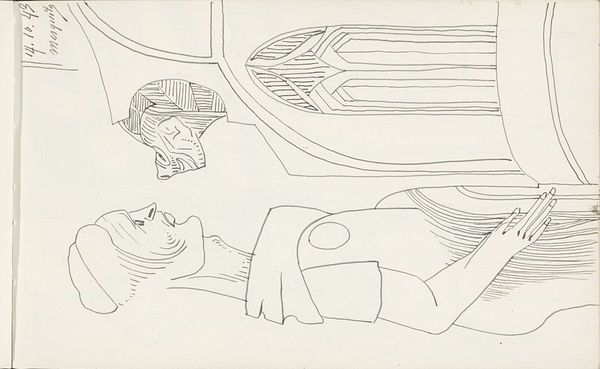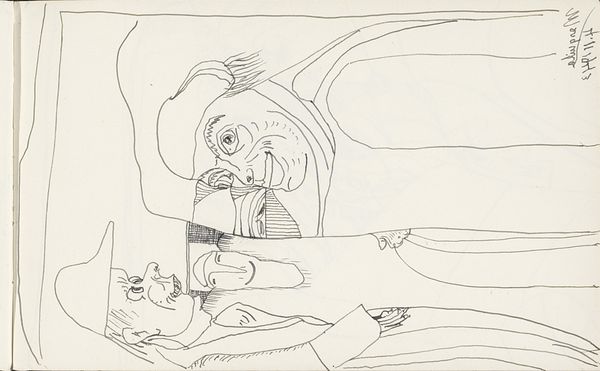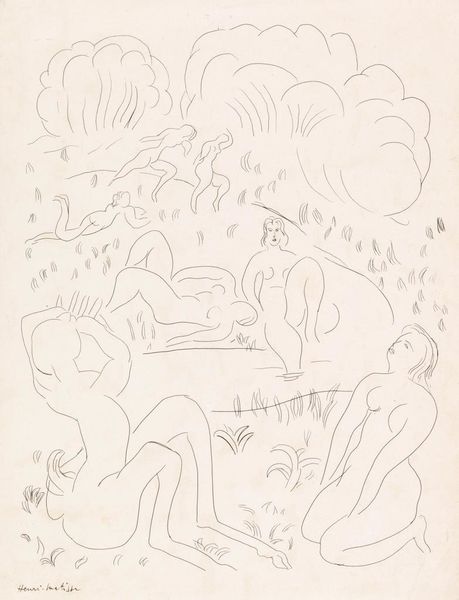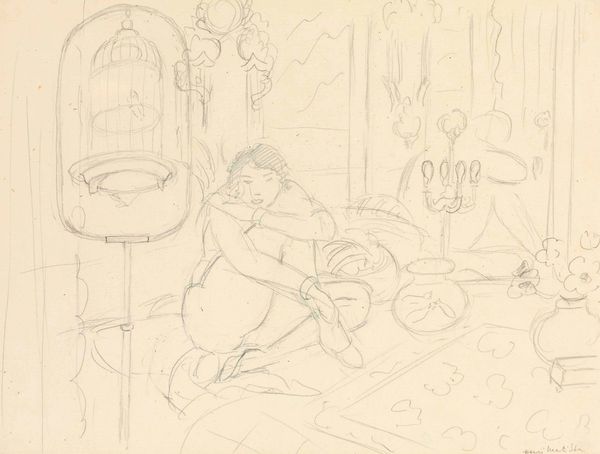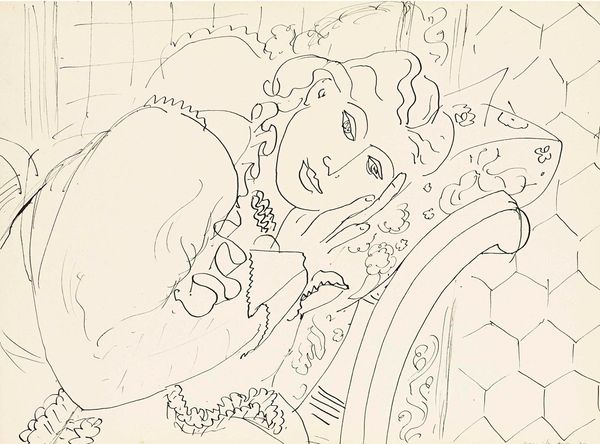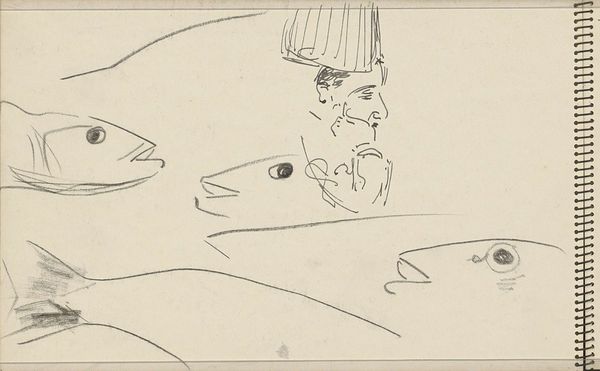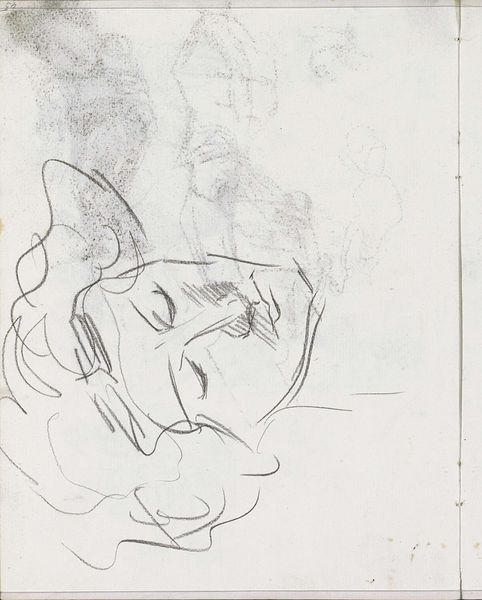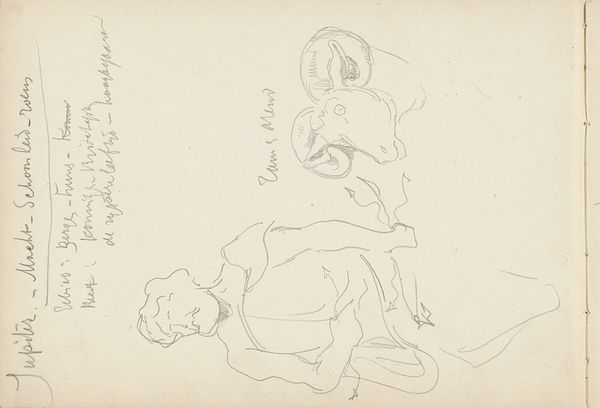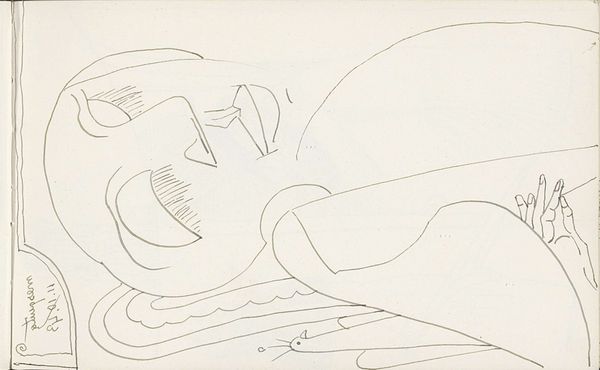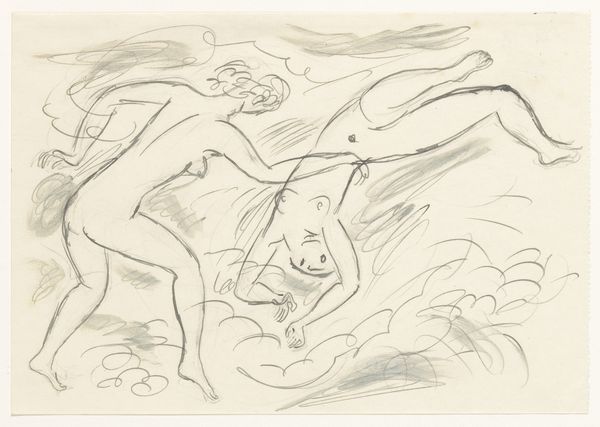
Copyright: Modern Artists: Artvee
Editor: So, here we have Henri Matisse’s "Les trois modèles," created in 1928. It's a drawing – seemingly just lines on paper. What I find striking is its simplicity; the linework feels both effortless and precise. What do you make of this, particularly from a material perspective? Curator: I'm drawn to that very point: the labor seemingly absent. Yet consider what's required for that effortless impression: material, paper and instrument of choice, practice and mastery to achieve this deceptively simple form, and the commodification through sale. How many similar works are being created or even discarded along the way, unknown to the world, or valued? Editor: That’s fascinating. I hadn't considered the economic value associated with the drawing material, versus other practices such as oil painting, or scultpure.. It feels so intimate, almost like a quick sketch, a direct expression from the artist's hand, bypassing typical processes. Curator: Exactly. Yet that assumed intimacy is constructed too. The scene—the models, the interior setting—what systems of labour enable such arrangements for Matisse? Editor: Ah, the models themselves – the figures central to the composition. Their pose, their consumption – food and other commodities laid bare. Curator: Yes. Matisse's drawings of his models provide an example of a studio economy in which the roles of the artist and sitter, the materials they require, and their production and transaction must be analyzed. That is our work of observation. Editor: I guess what I am taking away from it is that even what appears simplest holds layers related to labour, consumerism and materials if you look closely. Curator: Indeed, the 'easy' lines can mask considerable, but worthwhile critical reflection on process.
Comments
No comments
Be the first to comment and join the conversation on the ultimate creative platform.
